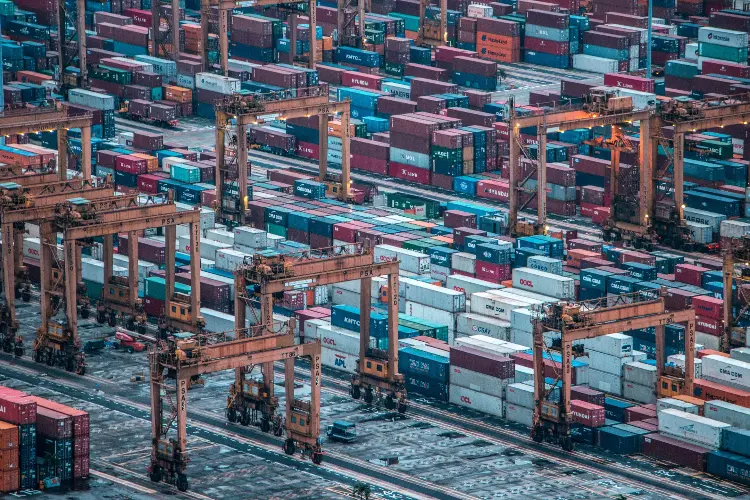Global logistics keeps the world connected, but behind seamless deliveries are deep-rooted challenges that often go unseen. Geopolitical instability, labor shortages, aging infrastructure, and inaccurate demand forecasting continue to disrupt supply chains and strain operational capacity. This article delves into each of these critical issues, highlighting how they impact efficiency and cost. It also explores how technology, data-driven forecasting, and strategic investment are helping companies build resilience and adapt to an increasingly unpredictable global trade environment.

Through logistics, continents have become interrelated as goods move without hurdles to other continents through logistics. However, underneath the surface, there is a jungle of logistical issues that may even go against even the most multi-skilled chains. Logistical problems become increasingly noticeable with businesses trying to satisfy the ever-increasing demand in a globalized world since it influences the effectiveness of transport of goods at the right time and place.
Global trade dynamics are very unpredictable and one of the greatest challenges in the present-day logistics. In the last few years, geopolitical tension and trade wars have transformed patterns of logistics. As an example, when the U.S placed the tariffs on Chinese imports, companies found alternative routes to avoid the additional price. Such rerouting resulted in overcrowding in ports such as those in Europe, which delayed and affected the supply chains across the globe. Then, there is the political instability: a regulatory shift or an outright embargo on exports can ruin any logistics operation that took a long time to organize. As such disruptions increase, companies have to be nimble and adaptive and realise that their strategies are usually subject to changes worldwide, which they are out of control.
In the logistics sector, there is also the complexity of labor shortage. A retired workforce, in conjunction with the physically exhaustive nature of the job, has caused a huge drop in the number of skilled workers. Finding workers, in particular, truck drivers and warehouse personnel, is at breaking point in most areas. Such shortage further affects the efficiency of operations, as well as subjects the existing employees to additional pressure risking burnout and mishaps. The logistics industry is unable to meet the demand of faster delivery due to which either service becomes tardy and low or in most cases lagging behind, whereas the demand is increasing steadily.
Infrastructural limitation also causes logistical inefficiency. Most countries have poor and underfunded transport systems that are finding it difficult to handle more goods flowing through. As an example, in Europe, roads are experiencing traffic jams which cause uncertain duration of journeys, and it directly affects the performance of logistics.
Some of the most common infrastructure bottlenecks include:
These shortcomings make logistics providers revise their methods, look at other avenues, or short-term ones, which tend to increase costs and delays in this process.
One of the major problems in logistics is the proper forecasting of the demands. This means that the traditional methods usually become inconsistent in aid of predicting consumer behavior particularly, when there are unforeseen world events or economic changes. Miscalculation of demand results in either overstocking or stockout which are both expensive to the companies. Capital and storage space are tied up in their overstocking and customers may be lost in the event of a stockout. In the modern bustling world, organizations require dynamic forecasting models that are dynamic enough to respond to a specific change in consumer preferences and respond to global disruptions in real-time.
As much as the logistics business is dealing with loads of trouble, innovation in technology and investment strategies are opening the door towards more sustainable business. Considering some of the geopolitical uncertainties, scarcity of labor, gap in the infrastructure and inaccuracy in the forecasts, the sector will be able to adjust well to the changing environment. The solution to logistical obstacles is in the implementation of new technologies and in making their business processes agile in the context of an ever-changing world market.

From Sparks to Soulmates: Exploring Every Type of Modern Relationship
In today’s dating landscape, relationships come in all forms: from spontaneous one-night stands to deep, long-term partnerships. This guide unpacks each type, including casual flings, situationships, exclusive dating, and serious commitments. By understanding how emotional intimacy and commitment evolve across these stages, you can better navigate your own love life and choose what truly aligns with your needs, values, and desires.
Chill Vibes Only: Your Definitive Guide to Satellite Beach, Florida
Satellite Beach, Florida, is a laid-back gem on the Space Coast perfect for surfing, kayaking, yacht tours, and turtle watching. With fewer crowds than Miami and a welcoming local vibe, it offers sun-soaked days, fresh seafood, and unforgettable sunsets. This guide reveals how to plan the ultimate chill getaway with insider tips from Miami-based travel bloggers.
Traveling to Dubai? Don’t Forget to Check out the Lesser-Known Spots
Dubai dazzles with iconic landmarks, but its lesser-known spots offer equally unforgettable experiences. From the world’s largest flower garden and historic neighborhoods to quiet lakes, art-filled streets, and a coffee museum, the Emirate is full of hidden gems. Exploring beyond the usual attractions reveals a richer, more authentic side of Dubai – one that’s well worth your time.